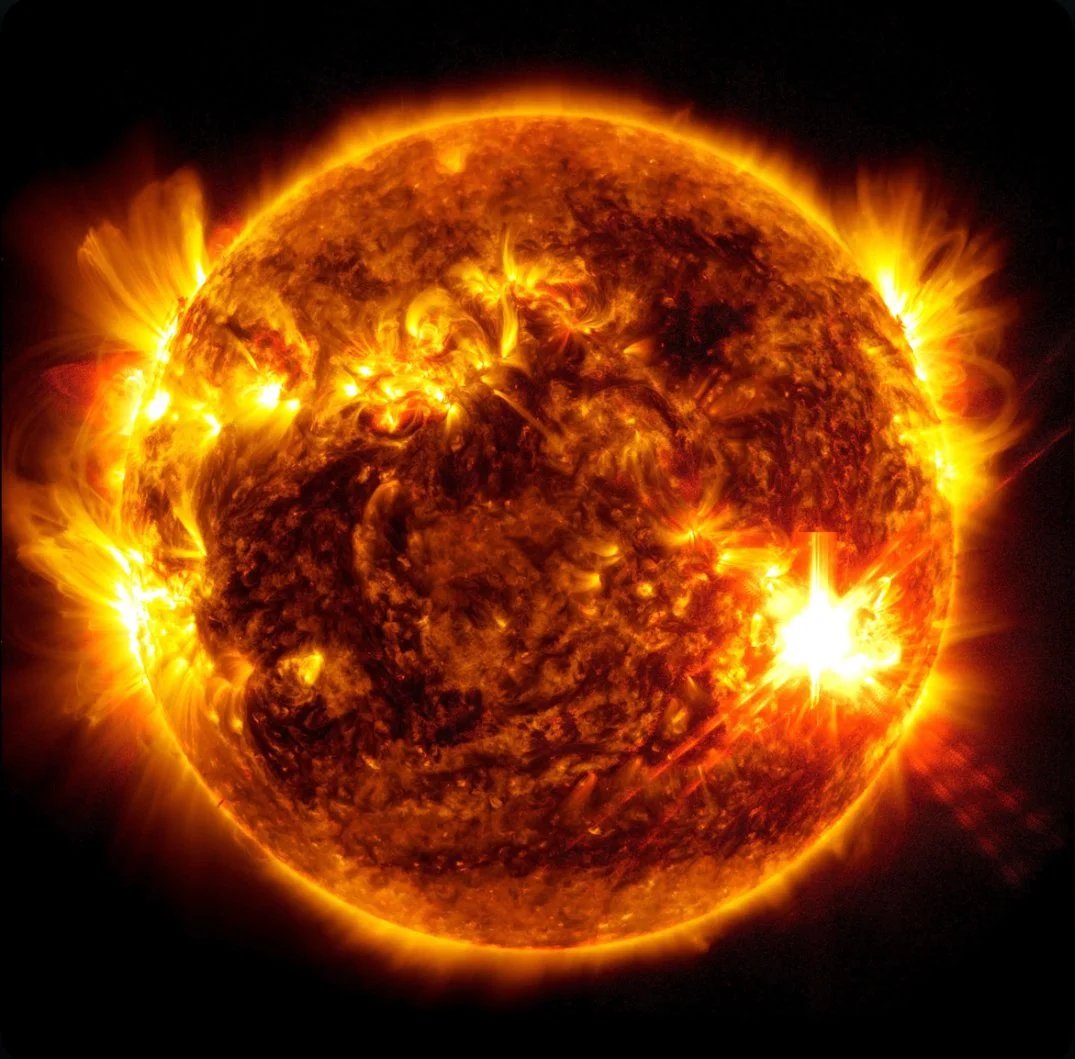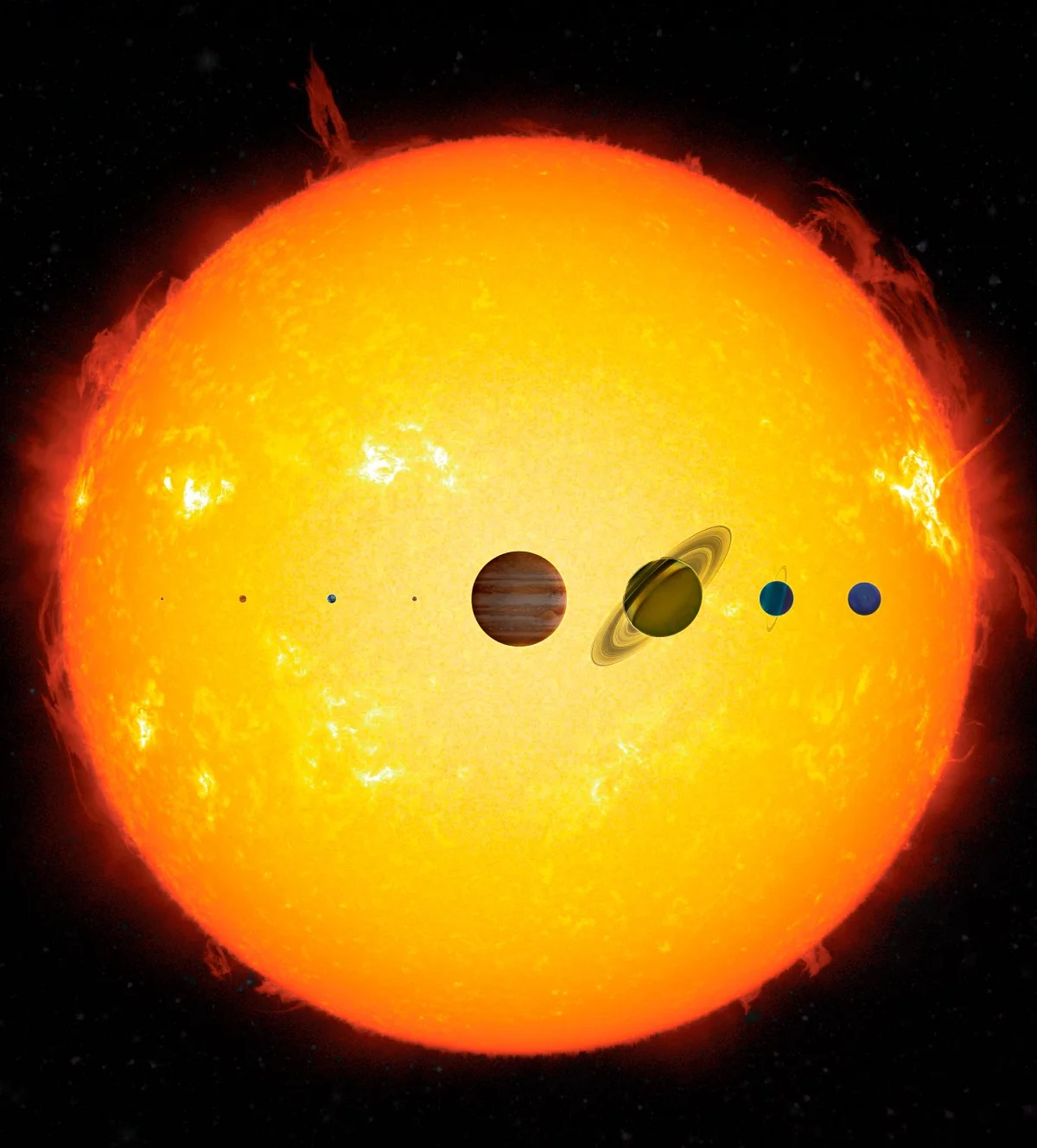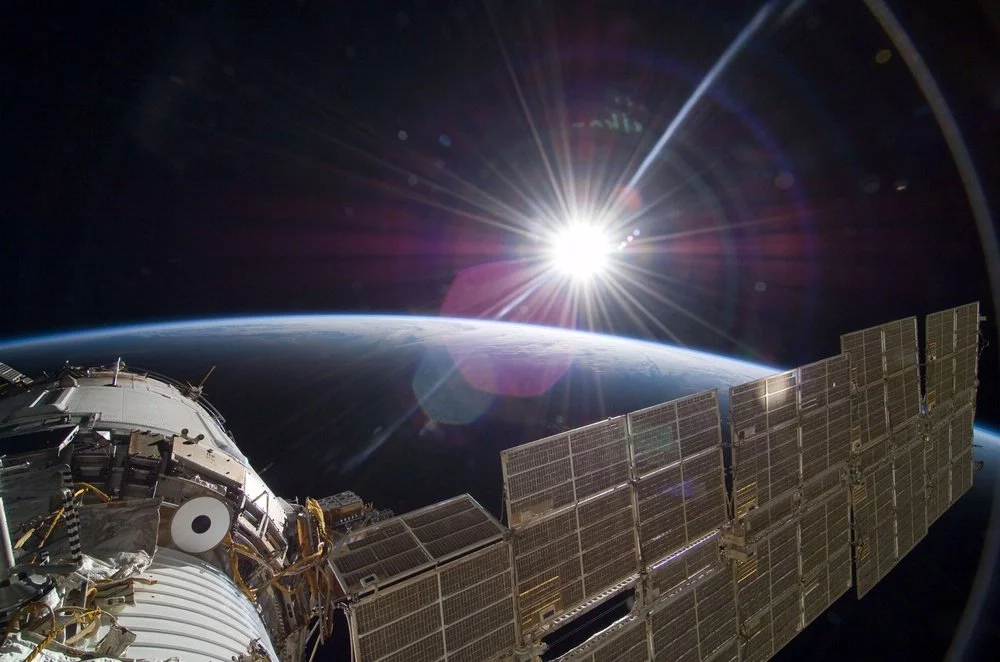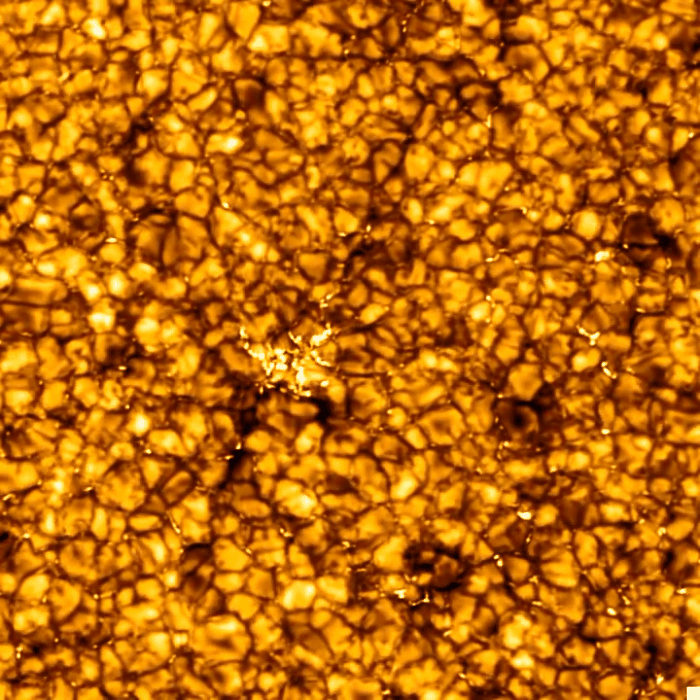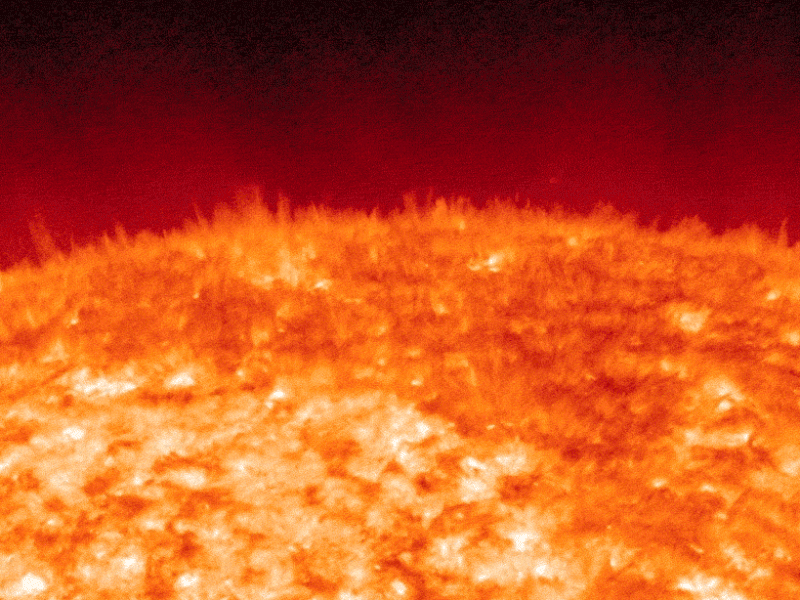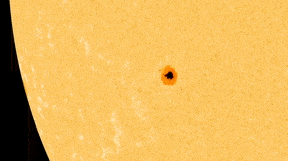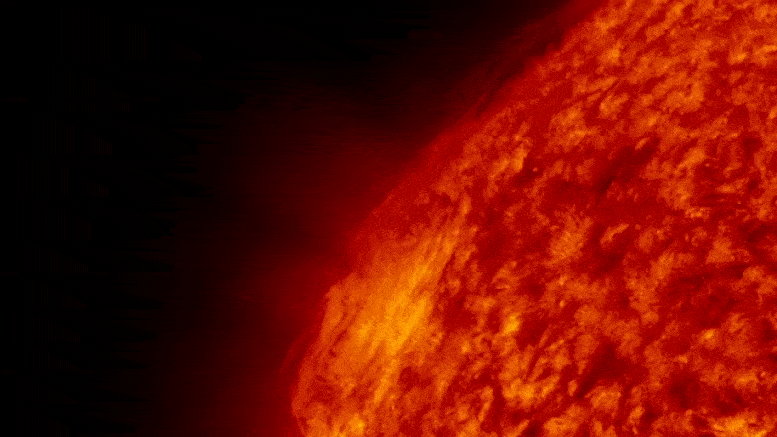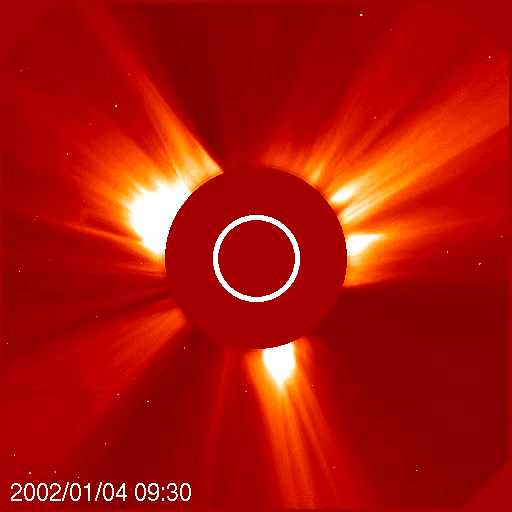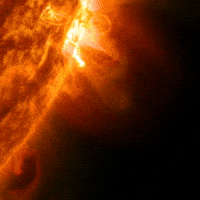THE SUN
The shining jewel at the center of the solar system.
Age: 4.6 billion years
Mass: 330,000 x Earth
Diameter: 1.4 million km
Surface temperature: 5,800°C
Core temperature: 15,000,000°C
At the center of our solar system lies the Sun, a star around which everything else revolves around. It formed about 4.6 billion years ago from the collapse of a giant molecular cloud. It is primarily composed of a massive amount of hydrogen and helium. The Sun’s immense mass corresponds with its equally immense gravity, which condenses itself inward and squeezes material in the core. This extreme pressure heats up the core to temperatures so extreme that it causes the hydrogen atoms in the core to fuse together into helium. This process is called thermonuclear fusion. Every second, the Sun fuses about 600 million tons of hydrogen into helium and converts another 4 million tons into energy, which it radiates out in the form of light and heat. The radiating energy’s outward pressure is matched against the Sun’s inward gravity. This balance is known as hydrostatic equilibrium and is what maintains its stable form. It will be maintained until one force overcomes the other. Hint: one of these forces is finite, and the other isn’t.
As a G-type star, the Sun is bigger than most stars but is nowhere near as big as stars can get. However, it is unmatched in its own domain. The Sun’s diameter is 10 times wider than the largest planet, Jupiter, and 109 times wider than our home planet, Earth. This means that you could fit about 1,000 Jupiters or 1.3 million Earths within the Sun’s entire volume. If a commercial airplane were to fly around the Sun at tis surface, travelling around 550 mph, it would take 65 days.
Even more impressive, the Sun makes up about 99.85% of all the mass in the solar system. Jupiter comes in at a distant second at 0.1%.
The Sun is astoundingly bright, able to wash out almost every other celestial object in daylight. Its apparent magnitude is recorded as -26.8. For comparison, the full moon is just -12.74 and the next brightest star, Sirius, is only -1.46. Remember that with the magnitude scale, a lower number means a brighter object and a change in value is logarithmic, meaning objects on the scale get exponentially brighter (as opposed to linearly). This is all to say that the Sun is 400,000 times brighter than the full moon and 12 billion times brighter than Sirius (Though, for the latter, this pretty much entirely attributed to the Sun’s proximity).
Note: Never look directly at the Sun without approved solar glasses or a solar telescope filter. Otherwise, you could risk permanent eye damage and/or blindness.
It is a common misconception that the Sun is yellow. Its true color is actually white. The reason we often see it as yellow, and sometimes red, has to do with how light scatters when it enters the Earth's atmosphere. Blue wavelengths get scattered more, which turns the Sun’s white light to yellow. As the Sun gets lower and lower in the sky, its light passes through the atmosphere at a lower angle, meaning the blue light is scattered more and more, eventually turning orange or red. However, if you were to get enough altitude above the atmosphere, you'll see a white Sun.
LAYERS OF THE SUN
The core is the central region of a star where thermonuclear fusion occurs and produces all of the star’s energy. It is by far the hottest and densest region of the star.
The radiation zone is the middle region of a star’s interior where energy travels through from the core in the form of electromagnetic radiation. Due to the density of this region, photons bounce from particle to particle and can take millions of years to escape.
The convection zone is the outermost layer of the star’s interior where hot material from near the star’s core rises, then cools at the surface and plunges back downward. These convective motions are visible at the surface in the form of granules.
The photosphere is the innermost layer of a star’s atmosphere. It is essentially the visible surface of the star from which light is finally able to radiate freely out into space. It is the thinnest, coolest layer of the star and has a granulated appearance due to the convection beneath. It can also feature darker, cooler regions called sunspots.
The chromosphere is the transparent middle layer of a star’s atmosphere. Despite being further from the star’s core, it is hotter than the photosphere. It is difficult to see unless you have special equipment or are viewing it during a solar eclipse. One of its most recognizable features are the grass-like spicules.
The corona is the outermost shell of a star’s atmosphere. It is an extremely hot zone caused by the transport of energy from the layers below by means of magnetic fields. Like the chromosphere, it is mostly only visible during a solar eclipse. There is a special kind of telescope called a coronagraph that makes it possible to see this region and search for exoplanets.
SURFACE FEATURES
Granules are small cell-like structures that cover the entire photosphere, or “surface,” of the Sun. They bubble up in the bright middle via the convection of hot plasma within the Sun's interior, then after 8-20 minutes of cooling, they sink back down at the darker edges, only to be replaced by another. They tend to be 1,000-2,000 km in diameter, meaning as few as six granules could span the diameter of the Earth.
Spicules are jet-like structures like flickering flames projecting outward from the Sun’s surface. These dynamic, wispy eruptions appear and disappear within minutes, like granules, typically reaching 5,000-9,000 km high. They are thought to be formed by the sudden release of magnetic energy, which propels plasma upwards from the photosphere into the Sun's chromosphere. It could explain why the latter is so much hotter than the former.
Sunspots are dark blemishes that appear on the Sun’s photosphere. They originate where the Sun’s magnetic field is extremely concentrated and strong. This inhibits the convection of hot plasma from the Sun’s interior to the surface which causes the region to cool down significantly. As a result of the lower temperature, the region becomes darker. Sunspots are often easily visible when looking at the Sun through a solar filter, even unmagnified.
Prominences are large looping filaments of plasma anchored to the Sun’s surface and shaped by its magnetic field. They are associated with active regions where intense magnetic fields emerge and often reach hundreds of thousands of kilometers into the solar corona. The magnetic structure can become unstable and allow a prominence to erupt outward in dramatic fashion. These eruptions can generate mass coronal ejections (CMEs) that affect Earth.
Coronal mass ejections (CMEs) are huge clouds of plasma that are released into space. They are usually the result of eruptions caused by the twisting up of the Sun’s magnetic field followed by the sudden release of built-up energy. They are quite similar to solar flares but are generally much broader, releasing much more energy (up to 100 times more), but at a much slower speed (solar flares can reach Earth within 8 minutes where CMEs can take a few days). They can cause geomagnetic storms on Earth, disrupting satellites, damage power grids and create beautiful aurorae.
Solar flares are intense eruptions of plasma and electromagnetic radiation, often originating around sunspots. They are triggered by the buildup of energy from the tangling and twisting of the Sun’s magnetic field and subsequent release. These bursts of energy are similar to coronal mass ejections (CMEs) but are more intense and eject energy at a much a faster speed (at or near light speed). Their effects on Earth can be more localized but also more dangerous, causing radio blackouts, disrupt satellite navigation network, and can be harmful to astronauts and airline passengers.

